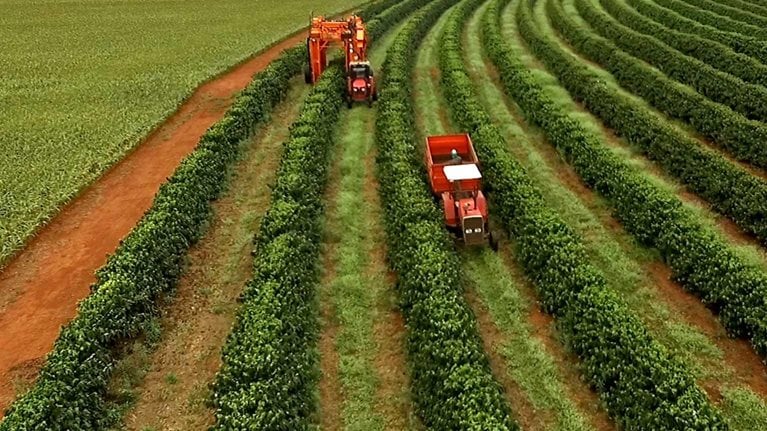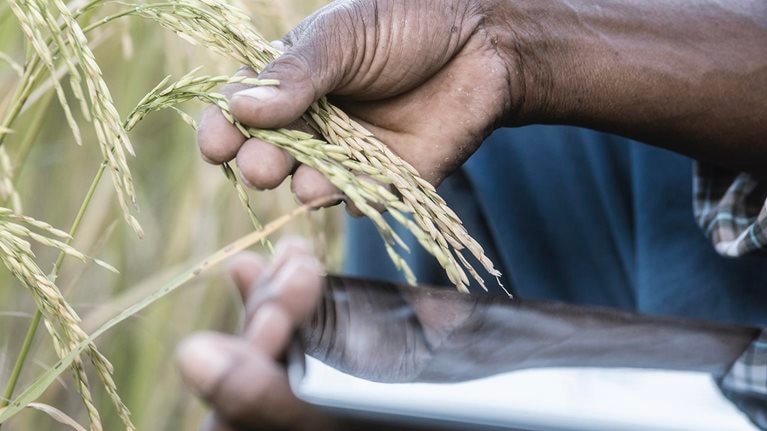Patent documents are underexploited resources—not only for understanding the evolution of agricultural technology but also for assisting governments, companies, and academic institutions in the inventive process.1 More than 40,000 patents related to agricultural inputs have been granted in the past ten years. We find that a rigorous patent-review process could aid agricultural-input companies in their pursuit of innovation.
Agricultural innovation is increasingly important given the need to feed a growing global population—ten billion people by 2050, two billion more than today.2 Worldwide, agricultural production will face challenges, such as skyrocketing demand for crop calories3 and constraints on crop yields.4 In addition to addressing global challenges, enhanced patenting may also lead to better corporate financial performance. Research has shown a positive correlation between granted patents and financial performance.5 We find similar indications within the agricultural-input sector, with high-patenting firms leading their low-patenting counterparts in three-year average earnings before interest, taxes, depreciation, and amortization (EBITDA) margins by two percentage points.6
Most agricultural innovation has been geographically concentrated. In 2019, for instance, five regions accounted for 77 percent of the granted patents worldwide: China (45 percent), the United States (11 percent), European Patent Organization member states, Russia, and South Korea (7 percent each). While the United States holds the top spot in the relevance of innovation, China is expected to continue its dominance in the raw quantity of patents published. Moreover, 88 percent of agricultural-input patenting in the United States was associated with corporations, both foreign and domestic (Exhibit 1).

Examples of patent analytics to inspire future innovation in agriculture include monitoring highly productive academic groups or start-ups to identify potential targets for collaboration; automatically scanning publicly available data on competitor portfolios and patent applications7; extracting features from patents (such as chemical formulae) to reveal movements in global product development; and identifying emerging trends—which may be counterintuitive—to inform research and development (Exhibit 2).

An analysis of emerging trends in agricultural patenting in 2019 revealed terms such as “slag”8 (Exhibit 3). This highlighted the presence of counterintuitive innovation that simultaneously addresses multiple challenges in sustainability (for instance, both industrial-waste recycling and crop-nutrition challenges). Recent studies have also shown that steel slag can be used as an accelerant in anaerobic digestion for better utilization of digestate fertilizer,9 for application to subtropical rice fields to reduce greenhouse gas emissions,10 and as a mineral fertilizer for bok choy.11

To harness the wealth of information that patent documents can offer, agricultural-input companies should prioritize the following areas:
- Establish a clear target and purpose for patent analytics. To maximize the effectiveness of custom-built pipelines, agricultural-input firms should decide whether patent analytics are being used to inspire invention, track competitor activity, identify new partnerships, or predict future market developments. A clearly defined vision for patent analytics can help to avoid building impractical in-house tools or licensing expensive commercial intellectual-property-analytics software.
- Choose a data-collection strategy. Patent databases such as Espacenet, Google Patents Public Data, The Lens, and PatentsView have made it easier for companies to access tens of millions of patents across dozens of jurisdictions. As these databases expand, it is important to keep abreast of which services offer convenient access to patents through callable application programming interfaces, which can be embedded into customized pipelines with on-request patent downloads.
- Explore the use of open-source packages to build customized pipelines. The growth in packages for open-source software such as Python and R helps researchers customize patent analysis workflows to specific needs. A proliferation of open-source implementations of algorithms related to natural language processing (NLP), geospatial analytics, and deep learning is decreasing the costs of building customized patent analytics applications. Furthermore, the latest implementations of such algorithms tend to be more readily available in open-source ecosystems compared with popular commercial software.
- Apply both bibliometric metadata and text data. Patent analytics have historically focused on examining metadata (for example, patent authors, technology classifications, publication date, citations, country, and instutition). However, analyzing large volumes of text such as titles, abstracts, and claims can make the search more granular.
- Use entire patent texts to avoid being misled by patent information. When conducting such text analyses, NLP-based approaches should aim to work with full patent texts.12 Patent titles and abstracts, while used in patent analyses, can be obscure and, as a result, present inadequate visibility into patent landscapes.13 Full texts, however, offer a better representation of what is actually described in the patent, leading to deeper insight into how agricultural technology is advancing.
- Combine patent analytics with additional data sources and the latest tools in AI. Patents can be used in combination with other data sources (such as scientific papers, news articles, and clinical trial records) for an even broader view on the direction of innovation. Moreover, companies using machine learning and semantic artificial-intelligence engines can rapidly parse these combined sources of text data to determine impactful trends in global agricultural innovation and adapt their portfolios accordingly.
Agricultural innovation has included steady growth in parallel to mounting pressures on global agricultural production. Patents contain valuable information and can guide targeted investments in research and development while revealing unexpected examples of emerging agricultural technologies.

